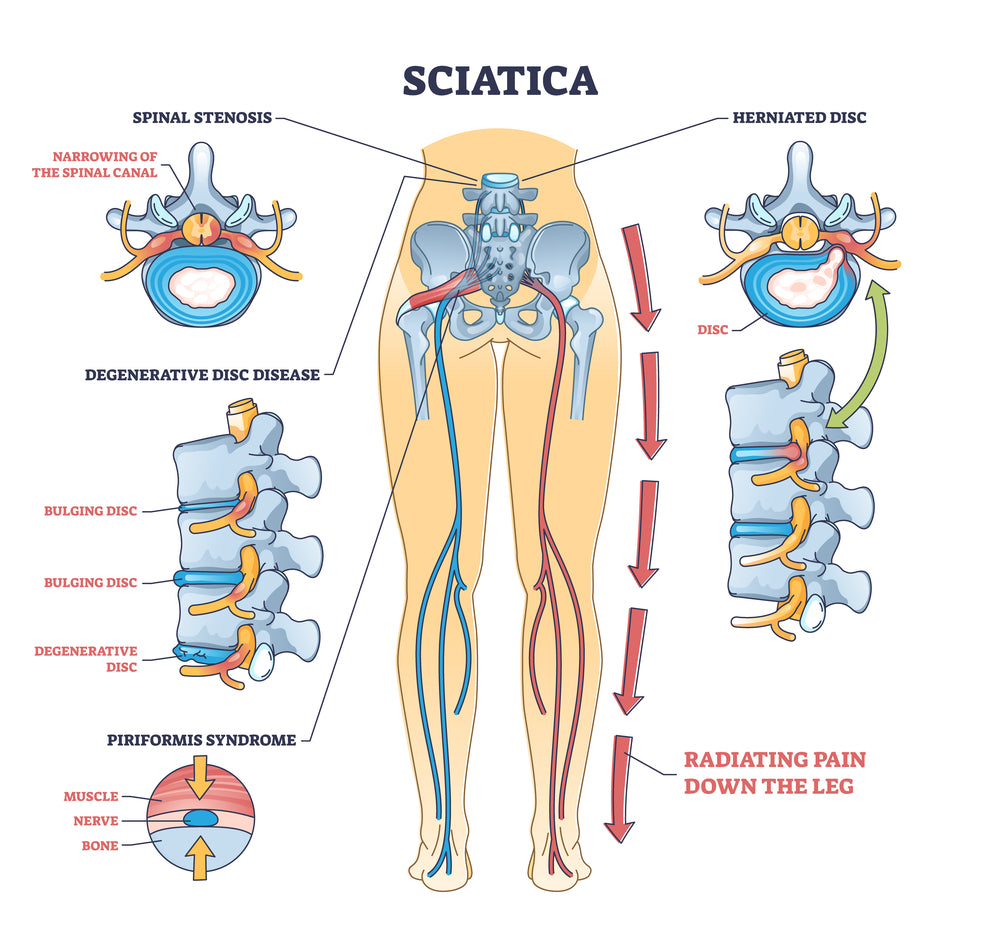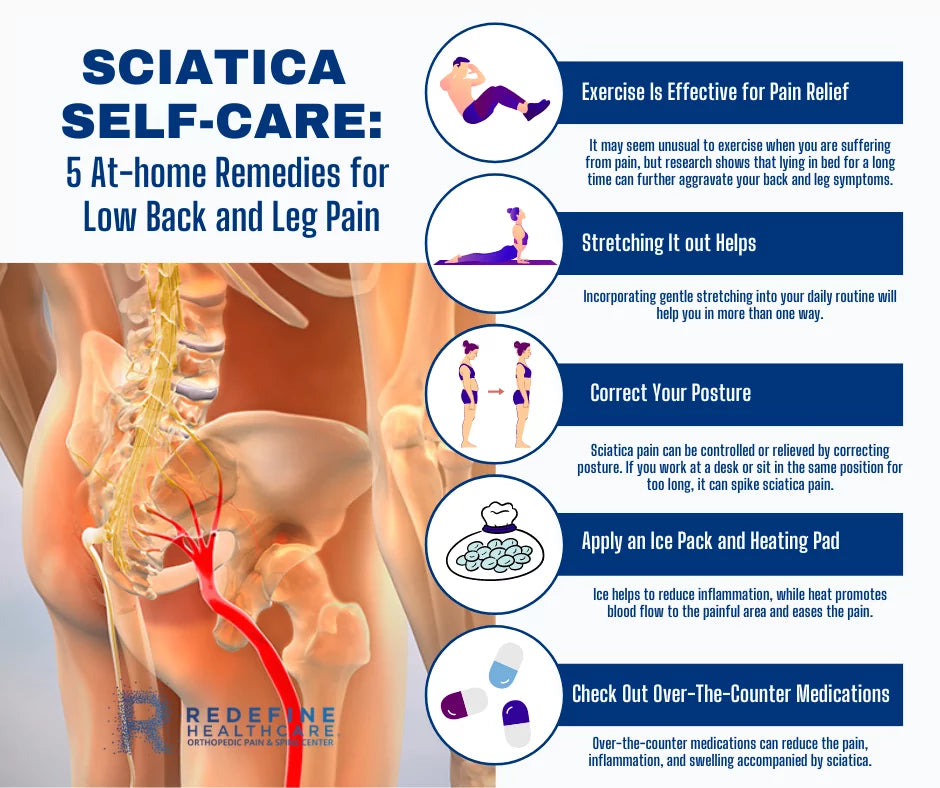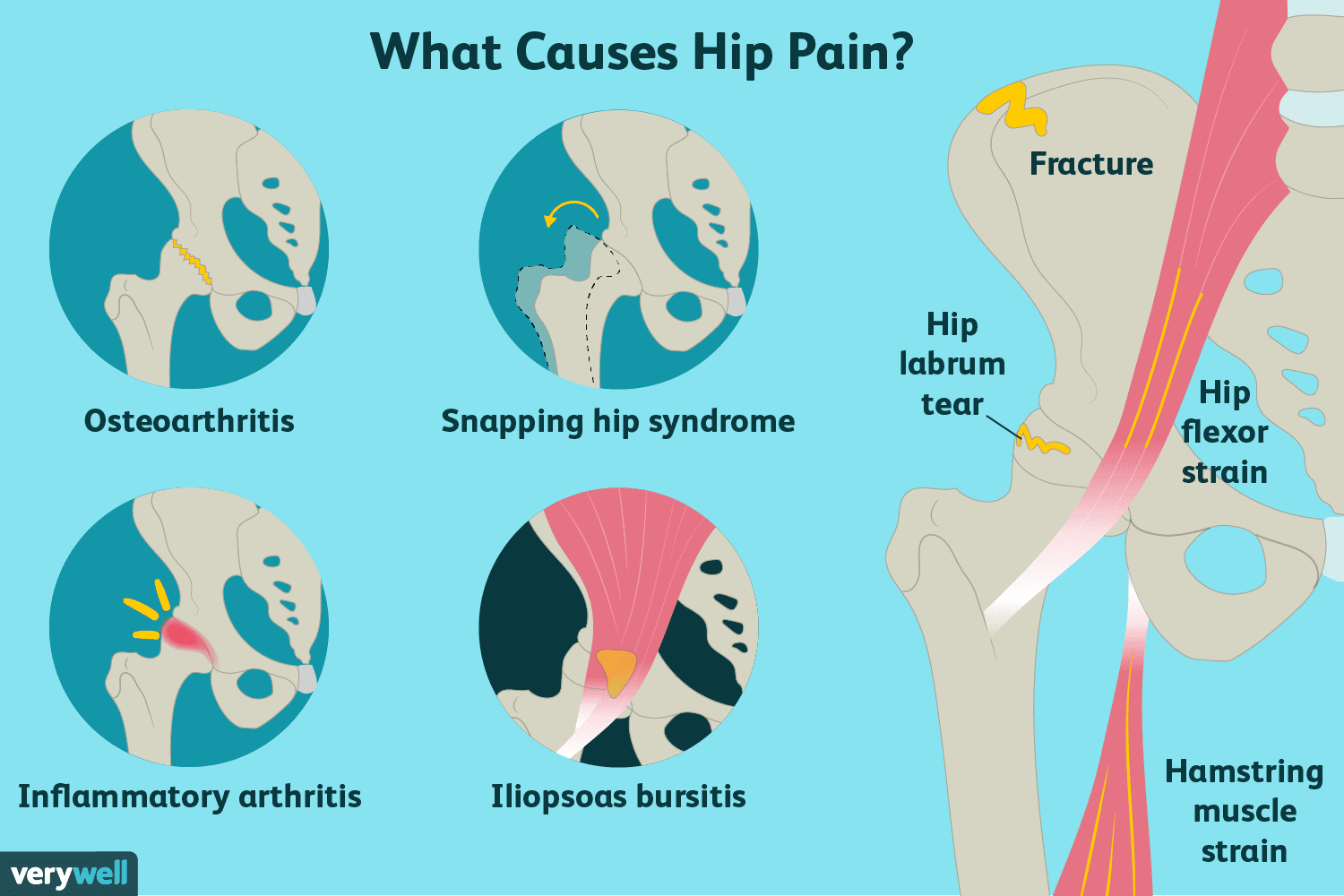Effective Relief For Your Sciatic Nerve Pain Today!
If you have sciatica, you know how painful it can be and how quickly you want relief. The sciatic nerve, the body's largest nerve, runs from the lower back through the hips and buttocks down each leg. When this nerve is irritated or compressed, it can cause pain, discomfort, weakness, and tingling in the legs, hips, or buttocks. Fortunately, there are effective solutions available to provide relief for sciatic nerve pain.
Key Takeaways:
- Sciatic nerve pain can be debilitating and affects the lower back, hips, and legs.
- Effective relief for sciatic pain is achievable through various strategies.
- Self-care measures, alternative therapies, and medical interventions can help manage and reduce sciatic pain.
- Consultation with healthcare professionals is important for developing a comprehensive treatment plan.
- Proper management can restore mobility and prevent future flare-ups of sciatic nerve pain.
Understanding Sciatic Nerve Pain
The sciatic nerve is the largest nerve in the body and plays a crucial role in transmitting signals between the lower back and the legs. When this nerve becomes irritated or compressed, it can lead to the development of sciatic nerve pain, also known as sciatica. Understanding the causes and symptoms of sciatic pain is essential in finding the appropriate relief and treatment.
Several factors can contribute to the irritation or compression of the sciatic nerve. One common cause is a herniated disc, where the inner core of a spinal disc protrudes through the outer layer and puts pressure on the nerve. Other causes may include bone spurs, which are bony growths that develop along the spine, or muscle spasms that can compress the nerve. These conditions can result in symptoms such as a burning sensation, numbness, weakness, or sharp pain that radiates from the lower back to the leg.
In addition to the physical discomfort, sciatic pain can significantly impact an individual's daily activities and overall quality of life. It can make it challenging to perform simple tasks like walking, standing, or sitting for prolonged periods. It is crucial to identify the symptoms of sciatica early on and seek appropriate treatment to alleviate pain and prevent further complications.
Symptoms of Sciatic Nerve Pain
The symptoms of sciatic nerve pain can vary from person to person but typically include one or more of the following:
- Sharp, shooting pain that radiates from the lower back down to the leg
- Burning sensation in the affected leg
- Numbness or tingling in the leg, foot, or toes
- Weakened muscles in the leg or foot
- Difficulty in standing, walking, or sitting for extended periods
If you experience these symptoms, it is essential to consult with a healthcare professional to determine the underlying cause and develop an appropriate treatment plan. Early intervention can help manage pain, improve mobility, and prevent the condition from worsening.
Self-Care Tips for Quick Sciatic Pain Relief
If you're seeking quick relief for sciatic nerve pain, there are several self-care measures that you can try at home. These simple yet effective strategies can help alleviate discomfort and promote healing. Here are some self-care tips to consider:
- Hot and Cold Packs: Applying hot and cold packs to the affected area can help reduce inflammation and muscle spasms. Start with an ice pack for 20 minutes, followed by a hot pack or warm compress for another 20 minutes. Repeat this process a few times a day for relief.
- Over-the-Counter Medications: Over-the-counter pain relievers like acetaminophen, aspirin, and nonsteroidal anti-inflammatory drugs (NSAIDs) can help alleviate sciatic pain. However, it's important to follow the recommended dosage and consult with a healthcare professional if you have any underlying medical conditions.
- Staying Active: While it may be tempting to rest and avoid movement when experiencing sciatic pain, staying active can actually help alleviate discomfort. Engaging in low-impact exercises like walking, swimming, or gentle yoga can help improve blood flow, reduce inflammation, and promote healing.
- Stretching Exercises: Gentle stretching exercises can help relieve compression or pinching of the sciatic nerve. Consider incorporating stretches that target the lower back, hips, and legs into your daily routine. Consult with a physical therapist or healthcare professional to learn proper techniques.
Remember, while these self-care tips can provide temporary relief, it's important to consult with a healthcare professional for a comprehensive treatment plan. They can assess your condition, determine the underlying cause of your sciatic pain, and recommend appropriate therapies or interventions.
Alternative Therapies for Sciatic Pain Relief
The treatment of sciatic pain extends beyond conventional methods. Alternative therapies have gained popularity in providing relief and addressing the underlying causes of sciatica. These therapies focus on holistic approaches that promote overall well-being and target the specific areas affected by sciatic pain.
Acupuncture
Acupuncture, an ancient Chinese practice, involves the insertion of thin needles into specific points in the body. This technique is believed to stimulate the body's energy flow and restore balance, relieving pain and reducing inflammation. Research has shown that acupuncture can effectively alleviate sciatic pain and improve functional outcomes, making it a viable alternative therapy option.
Massage Therapy
Massage therapy can provide relief by targeting muscle tension and promoting relaxation. Therapeutic massages can help reduce inflammation and increase blood flow, which can alleviate pressure on the sciatic nerve. Various massage techniques, such as deep tissue massage or myofascial release, can effectively address the underlying causes of sciatica and provide lasting pain relief.
Yoga
Yoga combines physical postures, breathing exercises, and meditation to promote flexibility, relaxation, and mental well-being. Specific yoga poses can help stretch and strengthen the muscles surrounding the sciatic nerve, reducing pressure and relieving pain. Regular practice of yoga has shown promising results in managing and preventing sciatic pain.
Stress Management
Stress can exacerbate sciatic pain, as it can cause muscle tension and increase inflammation in the body. Stress management techniques, such as meditation, deep breathing exercises, and mindfulness practices, can help reduce stress levels and promote relaxation. By incorporating stress management into a comprehensive treatment plan, individuals can effectively manage and prevent sciatic pain flare-ups.
The Role of Physical Therapy in Sciatic Pain Relief
Physical therapy plays a crucial role in treating and managing sciatic pain. With targeted stretches, ice and heat therapy, and lifestyle adjustments, physical therapy can provide effective relief for individuals suffering from sciatic nerve pain.
During physical therapy sessions, a trained therapist will guide patients through specific stretches and exercises that target the muscles and structures contributing to sciatic pain. These targeted stretches aim to alleviate muscle tension, improve flexibility, and reduce compression on the sciatic nerve. Regular sessions can help individuals regain strength, improve posture, and enhance overall mobility.
In addition to stretches, physical therapists may recommend ice and heat therapy to further reduce inflammation and promote healing. Applying ice packs in the early stages of pain can help numb the area and reduce swelling, while heat therapy, such as warm compresses or a heating pad, can increase blood flow and relax muscles.
Furthermore, lifestyle adjustments are an integral part of physical therapy for sciatic pain relief. Therapists may provide guidance on correct ergonomics, proper body mechanics, and postural exercises to prevent further strain on the sciatic nerve. Additionally, they may educate patients on the importance of maintaining a healthy weight, as excess weight can exacerbate sciatic pain.
Benefits of Physical Therapy for Sciatic Pain Relief
- Targeted stretches and exercises to alleviate muscle tension and improve flexibility
- Ice and heat therapy to reduce inflammation and promote healing
- Lifestyle adjustments to prevent further strain on the sciatic nerve
- Guidance on correct ergonomics, proper body mechanics, and postural exercises
- Improved strength, posture, and mobility
Through a comprehensive approach, physical therapy can help individuals find relief from sciatic pain and regain their quality of life. It is important to consult with a healthcare professional and follow a customized treatment plan to ensure optimal results.
When to Seek Medical Intervention for Sciatic Pain
If self-care measures and alternative therapies don't provide sufficient relief for your sciatic nerve pain, it may be necessary to consult with a healthcare professional. They can assess the severity of your condition and recommend appropriate medical interventions. Here are some instances where seeking medical intervention may be necessary:
- If your pain persists or worsens despite trying self-care measures
- If you experience additional symptoms such as numbness or difficulty controlling bowels or bladder
- If your pain is interfering with your daily activities and quality of life
Consulting with a doctor allows for a thorough evaluation of your condition, which may include diagnostic tests such as imaging scans to identify the underlying cause of your sciatic pain. Based on the results, your doctor can suggest various treatment options.
Medical Interventions for Sciatic Pain
When it comes to medical interventions for sciatic pain, your doctor may recommend the following:
- Doctor consultation: An initial visit with a healthcare professional to discuss your symptoms, medical history, and undergo physical examination.
- Prescription pain relief: Medications such as muscle relaxants, opioids, or anticonvulsants may be prescribed to manage severe pain that doesn't respond to over-the-counter options.
- Epidural steroid injections: These injections deliver anti-inflammatory medication directly to the affected area to reduce inflammation and provide temporary relief.
- Nerve blocks: In cases where the pain is localized to a specific nerve, nerve blocks may be used to temporarily numb the affected nerve and provide temporary pain relief.
It's important to remember that medical intervention should be pursued under the guidance of a healthcare professional, as they can tailor the treatment plan to your specific needs and monitor your progress along the way.
Table: Medical Interventions for Sciatic Pain
| Treatment | Description |
|---|---|
| Doctor consultation | Initial visit to discuss symptoms, medical history, and undergo physical examination |
| Prescription pain relief | Medications prescribed for severe pain unresponsive to over-the-counter options |
| Epidural steroid injections | Anti-inflammatory medication injected into the affected area to reduce inflammation |
| Nerve blocks | Temporary numbing of a specific nerve to provide pain relief |
Remember, medical intervention is just one aspect of managing sciatic pain. It is important to combine it with other treatment approaches such as self-care measures, alternative therapies, and lifestyle adjustments to achieve long-term relief and prevent future flare-ups of sciatic nerve pain.
Surgical Options for Severe Sciatic Nerve Pain
If self-care measures, alternative therapies, and medical interventions fail to provide adequate relief for severe sciatic nerve pain, surgery may be considered as a last resort. Surgical procedures aim to alleviate the pressure on the sciatic nerve by addressing the underlying cause of the pain. These procedures are typically recommended for cases where conservative treatments have been unsuccessful.
There are different surgical options available depending on the specific condition causing the sciatic pain. For example, if a herniated disc is compressing the nerve, a surgeon may perform a discectomy to remove a portion of the disc and relieve the pressure. In cases where bone spurs are the cause, a laminectomy may be performed to remove the bony growths and create more space for the nerve.
It's important to note that surgery for sciatica is not necessary for the majority of individuals with the condition. Most cases of sciatic pain can be effectively managed with non-surgical treatments. Surgery is typically reserved for severe cases or when conservative measures have failed to provide relief. A healthcare professional will carefully assess the individual's condition and recommend the most appropriate course of action.
Benefits and Risks of Surgery for Sciatica
| Benefits | Risks |
|---|---|
| - Provides long-term relief for severe sciatic pain | - Potential complications from surgery |
| - Addresses the underlying cause of the pain | - Infection at the surgical site |
| - Improves mobility and function | - Nerve damage |
| - Reduces dependence on pain medications | - Blood clots |
| - Allergic reactions to anesthesia |
It's crucial to carefully weigh the potential benefits and risks of surgery for sciatic pain. Consulting with a healthcare professional and considering a second opinion can provide valuable insights into the most appropriate treatment options for individual cases.
If surgery is recommended, it's essential to follow all pre-operative and post-operative instructions provided by the surgeon. This includes properly managing pain, attending follow-up appointments, and engaging in any recommended rehabilitation or physical therapy programs. Surgery for sciatica should be viewed as a well-considered decision made in conjunction with the healthcare team.
Conclusion
Managing sciatica and finding relief from sciatic pain is possible through a comprehensive approach that combines self-care measures, alternative therapies, and medical interventions when necessary. By implementing these strategies, individuals can effectively reduce their sciatic pain and prevent future flare-ups.
It's important to prioritize self-care measures such as using hot and cold packs, taking over-the-counter medications, staying active, and incorporating stretching exercises into your routine. These simple steps can go a long way in alleviating pain and discomfort.
Additionally, alternative therapies like acupuncture, massage therapy, and yoga can complement traditional treatments and provide further relief. These therapies help relax muscles, promote circulation, and enhance overall well-being, contributing to a holistic approach to managing sciatica.
Consulting with a healthcare professional is crucial, especially if self-care measures and alternative therapies are not providing sufficient relief. They can offer medical interventions such as prescription pain relief, epidural steroid injections, or nerve blocks to address inflammation and provide long-term relief.
Remember, managing sciatic pain is a journey that requires patience and persistence. By working closely with healthcare professionals and following a comprehensive treatment plan, individuals can regain control of their lives and prevent future flare-ups of sciatic nerve pain.
FAQ
What is sciatic nerve pain?
Sciatic nerve pain is caused by the irritation or compression of the sciatic nerve, which runs from the lower back through the hips and buttocks down each leg. It can cause pain, discomfort, weakness, and tingling in the legs, hips, or buttocks.
What are the causes of sciatic nerve pain?
Sciatic nerve pain can be caused by factors such as herniated discs, bone spurs, or muscle spasms that irritate or compress the sciatic nerve.
What are the common symptoms of sciatic nerve pain?
Common symptoms of sciatic nerve pain include a burning sensation, numbness, weakness, or sharp pain that can radiate from the lower back down to the leg.
How can I get quick relief for sciatic nerve pain?
Quick relief for sciatic nerve pain can be achieved by using hot and cold packs, taking over-the-counter medications like acetaminophen or NSAIDs, staying active, and doing gentle stretching exercises.
Can alternative therapies help with sciatic pain relief?
Yes, alternative therapies such as acupuncture, massage therapy, and yoga have shown promising results in reducing sciatic pain and improving mobility.
What is the role of physical therapy in treating sciatic pain?
Physical therapy plays a crucial role in treating and managing sciatic pain by designing a customized treatment plan that includes targeted stretches, ice and heat therapy, and lifestyle adjustments.
When should I seek medical intervention for sciatic pain?
You should seek medical intervention if self-care measures and alternative therapies don't provide sufficient relief or if you experience additional symptoms like numbness or difficulty controlling bowels or bladder.
Is surgery a common treatment for sciatic nerve pain?
Surgery is generally considered a last resort for severe cases of sciatic nerve pain when other treatments have failed. It involves removing bone spurs or a portion of a herniated disc to alleviate pressure on the nerve.




Leave a comment
This site is protected by hCaptcha and the hCaptcha Privacy Policy and Terms of Service apply.